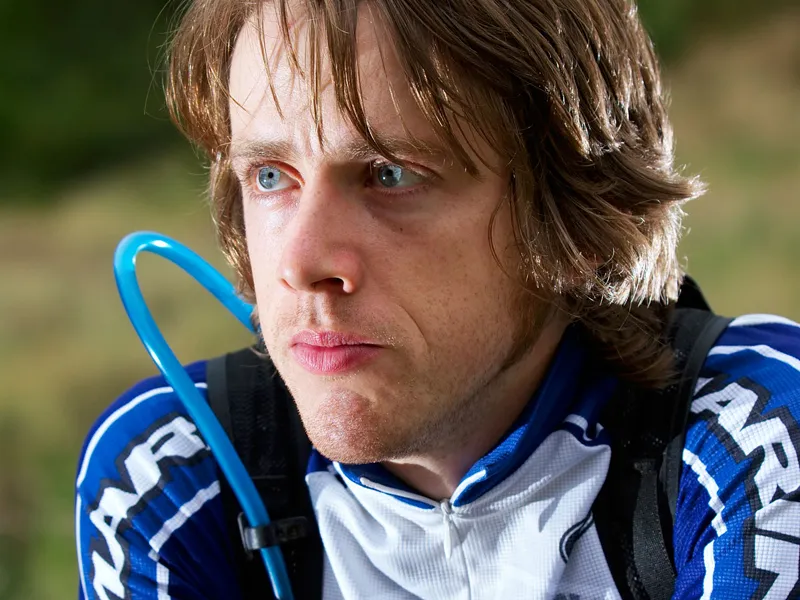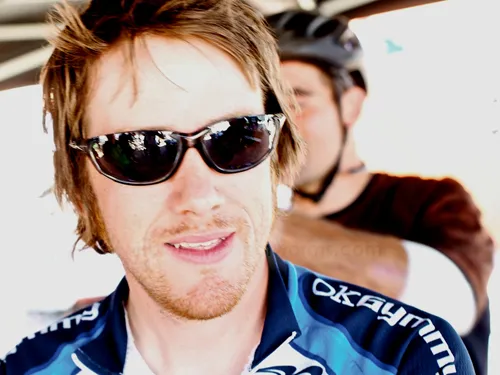Ian Alexander is the chief designer for Whyte and Marin bikes. After finishing a degree in product design he raced full-time for a season on the road. A chance meeting in 2002 with ex-Formula One suspension engineer Jon Whyte led to him becoming Jon’s apprentice designer at ATB Sales, the company behind Whyte and Marin UK. When Jon retired in 2006, Ian happily took up the mantle. We spoke to him about the challenges of following in such illustrious footsteps, and what he's got planned for Whyte and Marin.
What's new for Whyte in 2009?
Well, we’ve been tweaking the E-120 a bit, but it’s still the same fantastic trail bike it was in '08. We wanted to spend time working to launch some really serious hardtails that will stand comparison with anything.
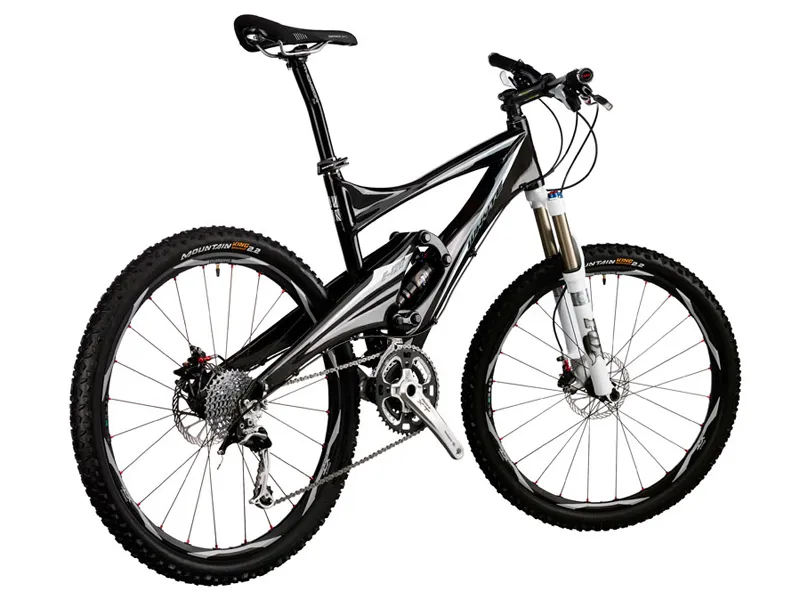
The E-120 is Whyte's flagship trail bike. The '09 model is stiffer and has carbon links
In 2004 we did our first Whyte hardtail, just as an experiment, something different to ride in the winter when the ground round here gets really mushy and some people go singlespeed.
This year our hardtail programme branched out so that as well as re-developing the original aluminium 19 and 905 frames – with some new hydroformed tubes and a new geometry based around the latest generation of 120mm forks with lightweight bolt-through axles – we’ve also embarked on some new relationships with high quality manufacturing partners to work on a titanium trail frame and an all-out 100mm carbon race frame.

The titanium Whyte 19 hardtail combines a classic look with the latest technology
The design concept behind the 19 titanium frame was to get a balance between contemporary technology and new 120mm fork geometry, but pull off a really classic and elegant look to the bike.
We worked with Litespeed to develop the design concept we had, and the results have been fantastic, so all those people riding aluminium 19s now have the option to upgrade to something special. All the core features are still there; the 19 dropout system makes it a really versatile, future-proof frame and with BB30 you get stiffness gains and weight savings over conventional cranks.
The carbon 19 was based around the concept of giving Billy Whenman, Whtye Racing's pro rider, an all-out race bike, so weight and stiffness is the first priority.
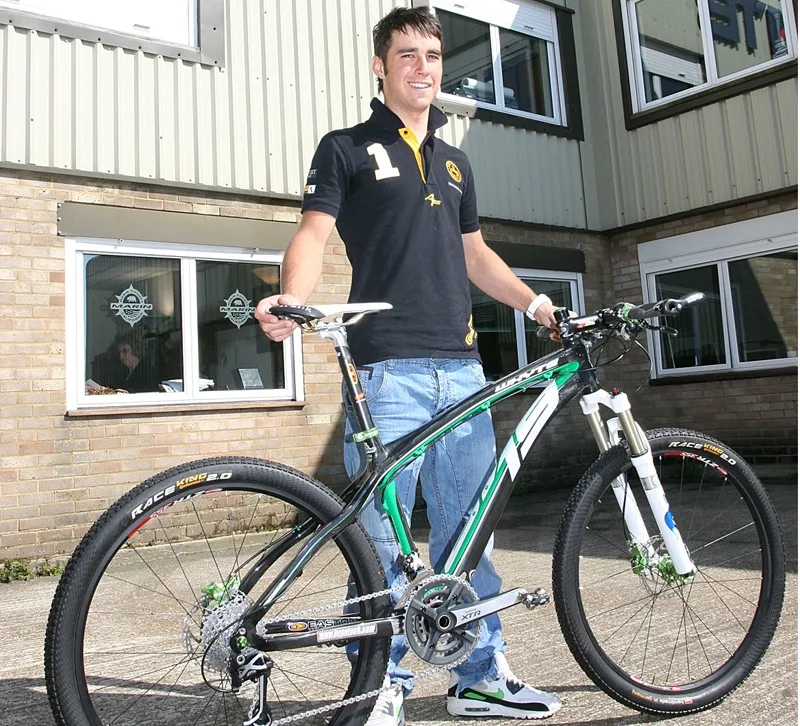
Whyte Racing rider Billy Whenman with his carbon 19 cross-country hardtail
He’s signed to Whyte Racing for 2009 for a proper shot at some big races and to do this we went ahead and opened some unique moulds to create a really contemporary looking frame that hits all the numbers in testing.
With features like BB30, full-carbon dropouts and a pretty complex layup matrix, we’re looking to hit stiffness and weight targets with this bike far in excess of the bike Billy was riding before.
How about this year's Marins?
Marin’s 2009 suspension range is very much an evolution of the fantastic 2008 bikes – the 140mm Attack Trail that won 5/5 from Mountain Biking UK and the 120mm Mount Vision that What Mountain Bike named as their Bike of the Year.
We chose to tweak the geometry of the Mount Vision ever so slightly for 2009 to enhance its trail capabilities, with an eye on the new, stiffer Fox 15mm quick-release axle. It helps make the 2009 Mount Visions that little bit better.
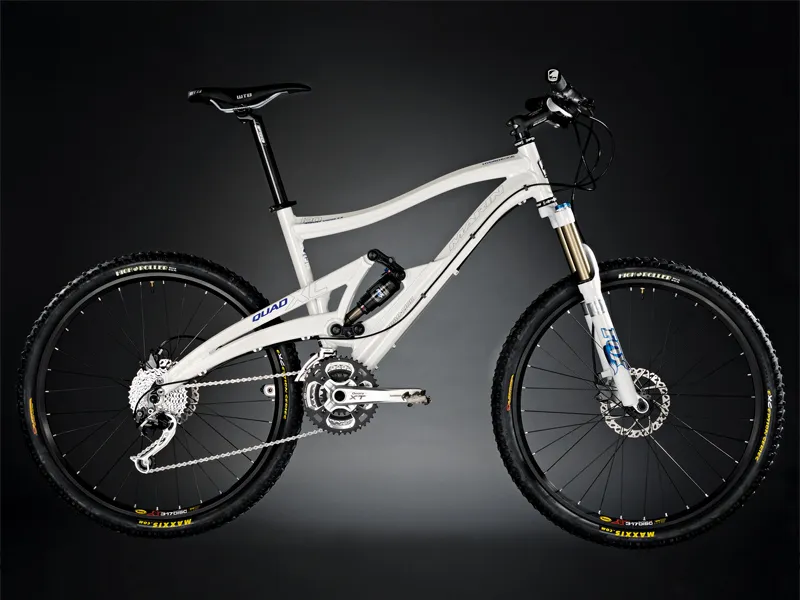
Marin's Mount Vision has been tweaked for 2009 to enhance its trail capabilities
For 2010 we’ve embarked on our biggest development year to date. We’ve been working on six new projects for Marin suspension bikes alone – they’ll be released over the course of the coming months – so we’ve been putting some big miles in on the prototypes over the winter.
There’s a media ride camp taking place in Marin [County], California this week, so I expect [What Mountain Bike and Mountain Biking UK journalists] Guy Kesteven and Russell Burton who are in the US at the moment will be showing some of the new bikes off soon. [Ed's note: Expect to see details of these new machines on BikeRadar as soon as we get the details.]
What’s it like taking over from Jon Whyte? Do you keep in contact? And what did he teach you?
Well, Jon achieved some significant firsts in the bike industry. The first full-suspension bike to win the National Cross-Country Championships, thanks to Paul Lasenby, is a pretty significant highlight in the history of the mountain bike, and from that point full-suspension has really become established.
The PRST-1 project was totally off the wall and Jon and Adrian Ward really did come up with something totally new and innovative, which at the time revolutionised front suspension performance and, perhaps more importantly for UK riders, reliability. We sometimes forget just how bad the function and reliability of a front fork could be back then.

The Whyte PRST-1 mixed love-it-or-hate-it looks with cutting-edge technology
We’ve tried to carry on the same thinking since Jon retired, focussing on what riding in the UK means from a first principal design perspective – obvious things like mud clearance and sealing linkage bearings as well as possible, because we know people just end up jet washing their bikes every week, even if we tell them not to.
We’ve tried to bring underlying design and individuality to the brand, so that a 2009 Whyte bike has a strong, distinctive design identity.
As a rider and designer I’m very lucky that the focus at Whyte is riding and developing in the UK, and then producing unique and distinctive stuff in conjunction with the best manufacturers.
A good example is the 2009 19 titanium hardtail. We went to the best factory in the world, Litespeed, but derived our own geometry, formed our own seatstay and chainstay design concept in conjunction with a BB30, and added our unique adjustable dropout system to create something very elegant but equally functional; something that isn’t just another titanium frame.
I last spoke to Jon when I read about another F1 designer who was heading into the world of folding bike design. We both thought ‘good luck’ because the hardest project the team ever did is our Mezzo folding bike.

Designing the Mezzo folding bike was one of ATB Sales' toughest challenges
It had such a complicated design brief because placing equal importance on ride and handling as well as folding size and function meant a substantial design, manufacturing challenge and investment, but the Mezzo has been really well received by everyone who’s ridden one.
What was it like when the Marin Mount Vision was named bike of the year 2008 by What Mountain Bike magazine?
There were only about five people involved in the design and development of that bike from start to finish, and to win such a big one against the combined resources of much much bigger multinationals means a lot to us. I’m guessing our R&D office is about the size of [Specialized founder and chairman] Mike Sinyard’s executive en suite!
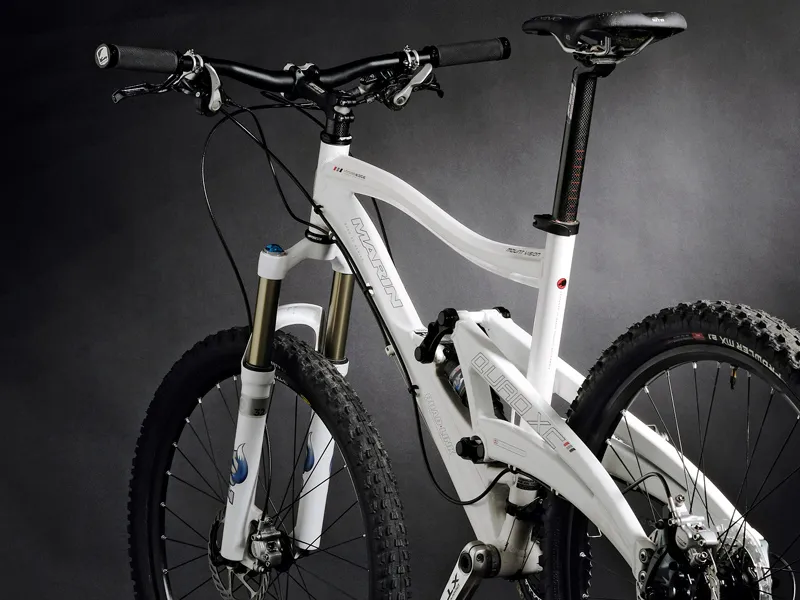
The Marin Mount Vision was What Mountain Bike magazine's bike of the year in 2008
Tell us about the Whyte design office...
The R&D office is based in the Cotswolds because that’s where Jon Whyte lived and worked before he retired. It also happens to be a great area for mountain biking trails, and puts us close to Wales for test days at Afan and Cwmcarn. They’re always rideable, whatever the British winter is up to, and we need somewhere reliable and repeatable like that when it comes to suspension testing.
My brother Pat joined ATB after Jon retired and he works on the mechanical design engineering and suspension simulation software. We both design with the latest 3D CAD applications from Autodesk. This technology means that before any Rapid Prototyping or actual riding prototypes are made we can generate and evolve the concepts in a digital prototype simulation.
It means we rarely need to make more than one or two ride prototypes to confirm the suspension performance. Geometry can be a different matter altogether, and lately we’ve had our test crew riding many more iterations of geometry to keep the bikes absolutely dialled into the latest forks and dampers that are going to make trail riding even better in the years to come.

ATB Sales' office in the Cotswolds is perfectly sited for testing bikes on the trails
You can’t get around the ride testing when designing bikes, particularly here in the UK, because great bikes don’t just fall out of the computer. That's lucky for us, as it’s the best part of the job when something completely new drops out of the stand and you get out for a ride.
The design office that the development team work out of is part of ATB Sales. ATB own the Whyte and Mezzo brands, as well as being the sole UK distributor for Marin USA and the Italian Wilier Triestina road bike brand.
As well as the Whyte and Mezzo products, we're also responsible for the design and development of the Marin suspension bike range, with Marin licensing the various Whyte QUAD-Link suspension patents.
We work closely with the guys in the product department in California to give them suspension bikes that are exactly what they’re after for their global markets. It’s also the reason why a Californian bike company has suspension bikes that work and last in the tough UK conditions. Even in 2009, this is pretty uncommon.

